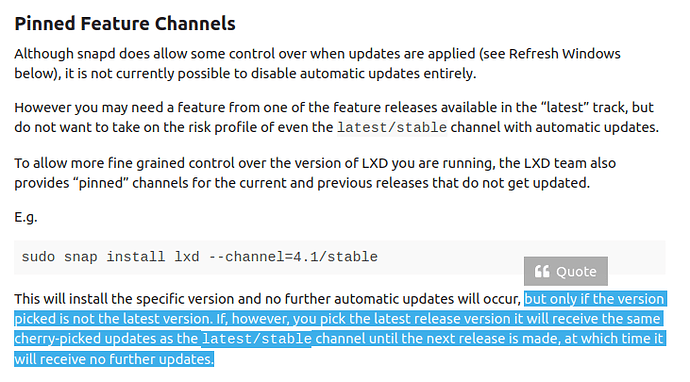Hi everyone,
I am working with @yang on a project that aims to provide a simple automated way to install and use LXD using Puppet for automation, both at the server level and instance declaration level.
We will soon release all the source code and documentation to the community, including some improvements of LXDUI that makes it usable for simple operations on standalone servers or LXD clusters.
One challenge that we are facing is the ability to target tried and tested LXD versions. If I understood correctly snaps are only available for the past 2 versions, which means that in some weeks we will probably not be able to install the specific version that has been tested and is known to work.
Even though upgrading to the latest version is good in the long run, upgrading on short cycles increases risk and unpredictability.
Question: can some thing be done to enable repeatable LXD installations over a reasonable time frame? (ex: 12 months? 18 months?).
Perhaps keeping snaps for a longer time would be a simple way?
Thanks for the support the has been given to @yang on the multiple questions that were posted here.
Best regards
 Seems a bit contra-natura.
Seems a bit contra-natura.
